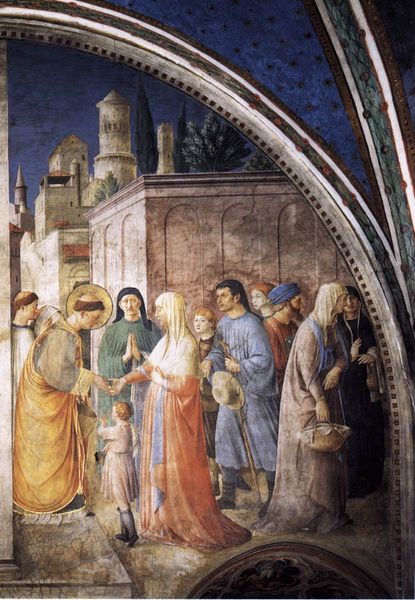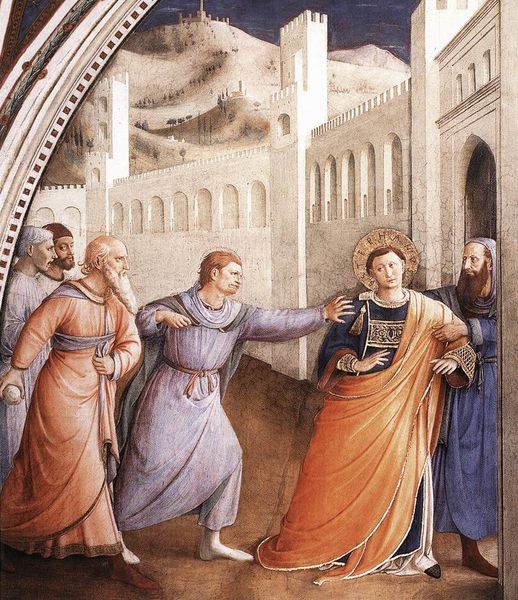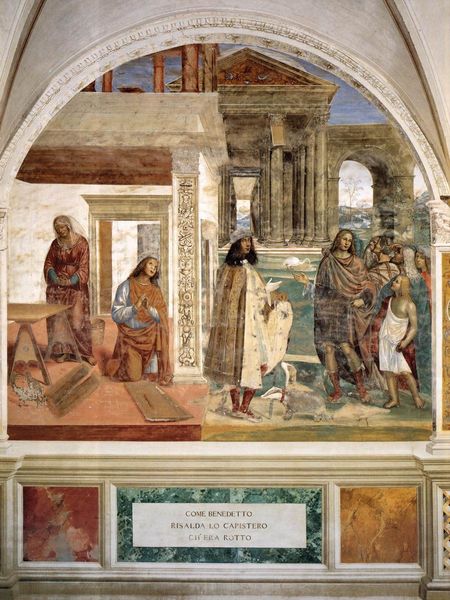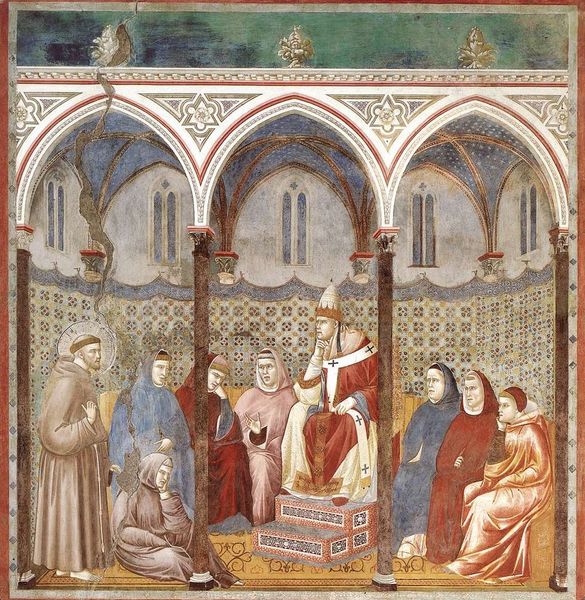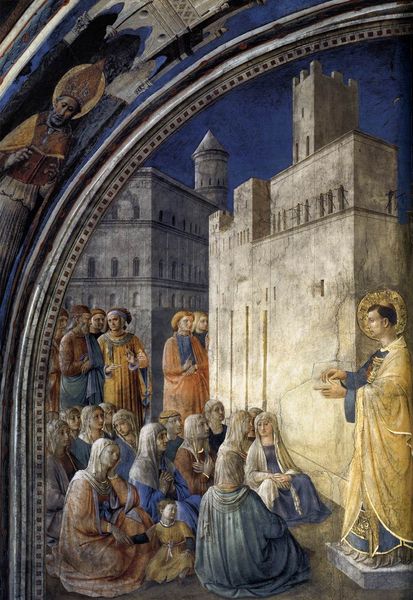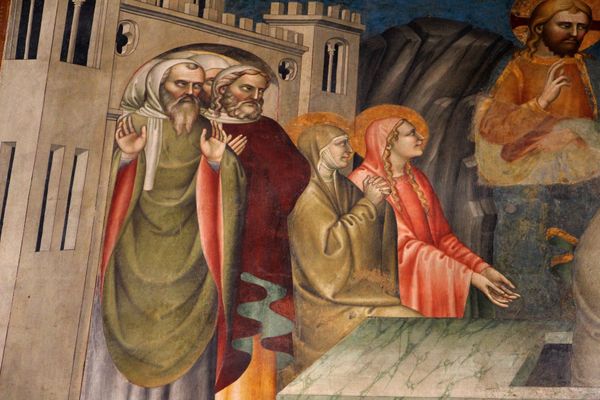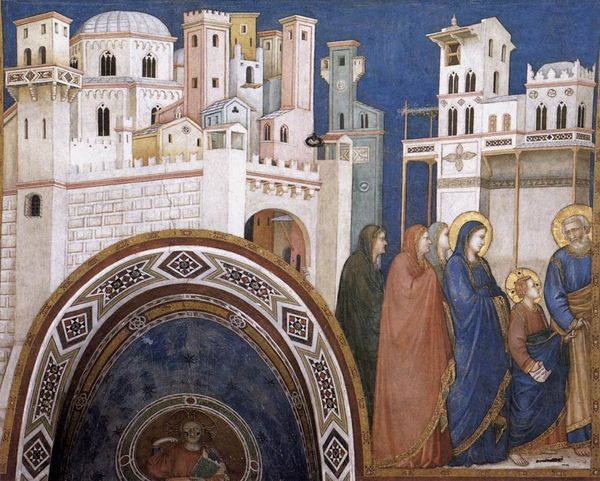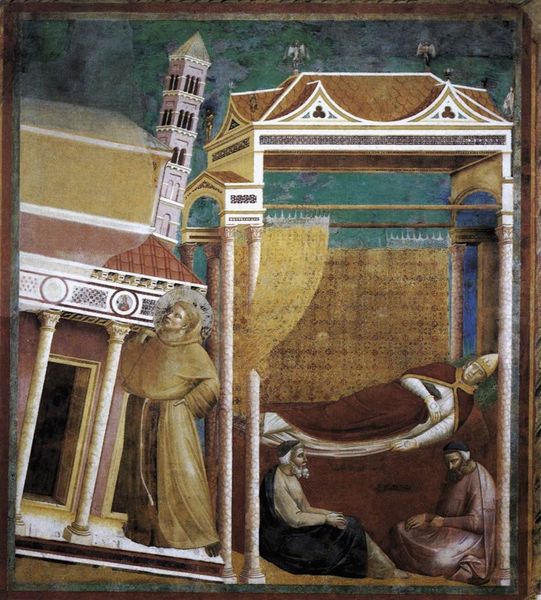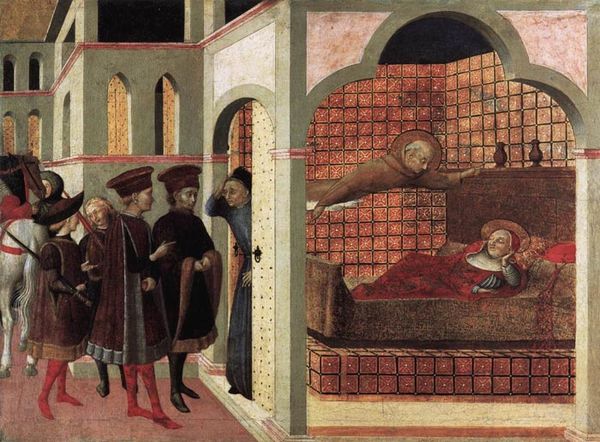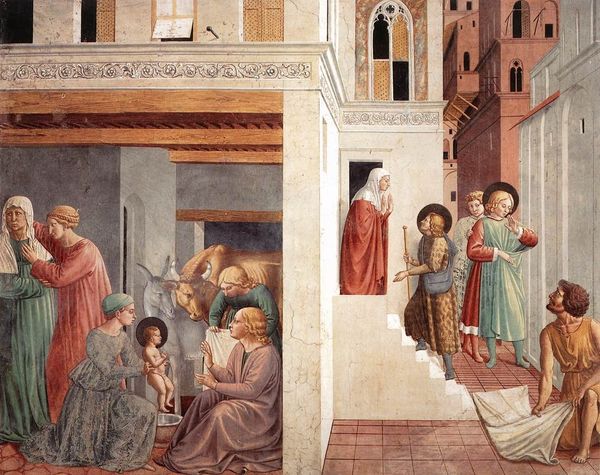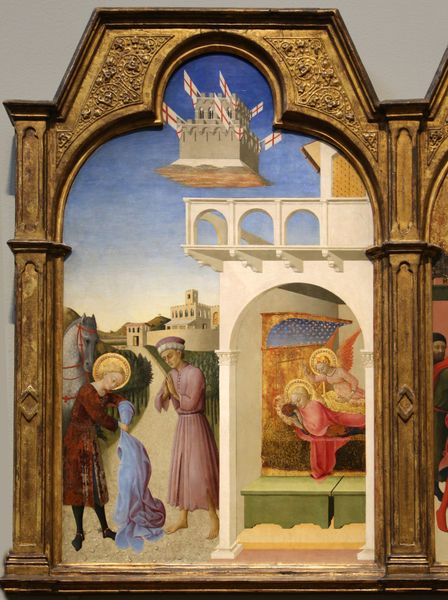
Apparition to Fra Agostino and to Bishop Guido of Arezzo 1300
0:00
0:00
giotto
Basilica of Saint Francis of Assisi, Assisi, Italy
tempera, painting, fresco
#
narrative-art
#
tempera
#
painting
#
holy-places
#
painted
#
figuration
#
fresco
#
oil painting
#
christianity
#
painting painterly
#
history-painting
#
italian-renaissance
#
christ
Dimensions: 270 x 230 cm
Copyright: Public domain
Editor: This is Giotto’s fresco, *Apparition to Fra Agostino and to Bishop Guido of Arezzo,* painted around 1300. It’s a narrative scene, full of architectural details. There’s almost a stage-like quality to the composition. How do you interpret the staging of the figures in relation to the architectural setting? Curator: The fresco reflects the complex power dynamics of the church at the time. Notice how the architectural setting not only frames but also compartmentalizes the figures. The structure itself feels like a theater, where roles and rituals are carefully enacted and observed. Giotto is highlighting the performative aspect of religious authority. The architectural backdrop elevates and legitimizes the actions unfolding within it. What power structures do you think Giotto might be subtly critiquing here? Editor: I see what you mean. It's as though the architecture is a tool of the church, emphasizing the separation between the holy men and the implied audience. The bishop lying ill to the side...is his power waning? Curator: Precisely. Consider also where this fresco is situated: within the Basilica of Saint Francis. The Franciscans were, in many ways, challenging the established church hierarchy with their focus on poverty and direct engagement with the poor. Giotto, through his masterful use of spatial arrangements, comments on these internal struggles. How does understanding this tension shape your perspective? Editor: It makes me think about the very public nature of religious imagery and its function in negotiating those power dynamics. It wasn’t just decoration, but a statement. Curator: Exactly! Frescoes like these were pivotal in shaping public opinion and reinforcing, or even subtly questioning, existing social and religious orders. This really changes our perception. Editor: Definitely. It’s fascinating to see how much the historical and social context can impact the interpretation of an artwork.
Comments
No comments
Be the first to comment and join the conversation on the ultimate creative platform.

